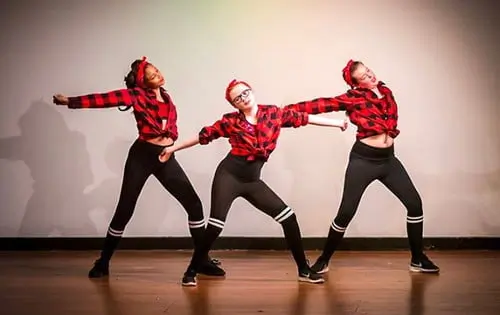- Introduction
- Jazz Dance: History and Characteristics
- Hip-Hop Dance: Origins and Elements
- Contemporary Dance: Blending Styles and Techniques
- Tap Dance: Rhythm and Percussion
- Ballet in Commercial Dance: Fusion of Classic and Modern
- Latin Dance Styles: Salsa, Bachata, and Merengue
- Ballroom Dance: Elegance and Partnership
- Commercial Dance in Music Videos: Behind the Scenes
- The Evolution of Commercial Dance: Trends and Influences
- Conclusion
Introduction
Introduction
Welcome to our comprehensive guide on commercial dance styles! In this article, we will delve into the exciting world of jazz, hip-hop, contemporary, tap, ballet, Latin, ballroom, and their role in music videos. Join us as we explore the history, characteristics, and evolution of each dance style.
Jazz Dance: History and Characteristics
Jazz dance originated in African American communities during the late 19th century. It draws inspiration from African rhythms, European ballet technique, and social dances. With its energetic and syncopated movements, jazz dance became an integral part of various music genres, including jazz itself. Today, it continues to captivate audiences with its improvisation and unique style.
Hip-Hop Dance: Origins and Elements
Hip-hop dance emerged in the 1970s in the streets of the Bronx, New York. Rooted in African and Afro-Caribbean dance traditions, it incorporates elements of breaking, popping, locking, and freestyling. Hip-hop dance is characterized by its urban and expressive movements, often reflecting social and cultural issues. It has become a global phenomenon, influencing mainstream music and dance.
Contemporary Dance: Blending Styles and Techniques
Contemporary dance is a fusion of various dance styles and techniques, including ballet, modern dance, and jazz. It emphasizes versatility and creativity, allowing dancers to explore their unique movement vocabulary. Contemporary dance often tells a story or conveys emotions through fluid and organic movements. It has gained popularity for its ability to push boundaries and challenge traditional dance norms.
Tap Dance: Rhythm and Percussion
Tap dance is characterized by its use of percussive footwork, creating rhythmic patterns and sounds. Originating from African American and Irish dance traditions, tap dance has evolved into a vibrant and dynamic form of expression. Dancers wear special tap shoes equipped with metal plates that produce rhythmic beats when struck against the floor. It showcases the intricate coordination of movement and music.
Ballet in Commercial Dance: Fusion of Classic and Modern
Ballet has a rich history dating back to the Italian Renaissance. In commercial dance, ballet serves as a foundation for many contemporary styles, infusing grace, technique, and discipline. It combines the fluidity of classical ballet with the innovation of modern dance, creating visually stunning performances. Ballet dancers undergo rigorous training to achieve the strength, flexibility, and poise required for this demanding art form.
Latin Dance Styles: Salsa, Bachata, and Merengue
Latin dance styles encompass a vibrant array of dances, including salsa, bachata, and merengue. These dances originated primarily in Latin American countries and have gained immense popularity worldwide. Latin dance styles are characterized by their infectious rhythms, sensual movements, and lively footwork. They represent the rich cultural heritage of Latin America and serve as a celebration of joy and passion.
Ballroom Dance: Elegance and Partnership
Ballroom dance is an elegant and sophisticated dance style that originated in Europe. It encompasses various dances, such as waltz, foxtrot, tango, and more. Ballroom dance involves precise footwork, graceful partnering, and intricate choreography. It requires both technical skill and a strong connection between dance partners, creating a captivating and harmonious performance.
Commercial Dance in Music Videos: Behind the Scenes
Commercial dance plays a crucial role in music videos, adding visual appeal and enhancing the narrative of the song. Choreographers and dancers collaborate closely with musicians and directors to create captivating performances. Commercial dance in music videos often showcases dynamic choreography, innovative concepts, and stunning visuals, captivating audiences worldwide.
The Evolution of Commercial Dance: Trends and Influences
The evolution of commercial dance has been influenced by various factors, including cultural shifts, technological advancements, and changing music trends. From traditional forms to contemporary styles, commercial dance continues to evolve and adapt to the ever-changing landscape of the entertainment industry. It reflects the creativity and diversity of dancers and choreographers, shaping the future of dance.
Conclusion
In conclusion, commercial dance styles have made a significant impact on the world of dance and entertainment. From the rich history of jazz and ballet to the urban vibes of hip-hop and the passion of Latin dances, each style brings its unique flavor to the stage. As commercial dance continues to evolve, it will undoubtedly inspire future generations of dancers and leave a lasting legacy in the world of performing arts.

